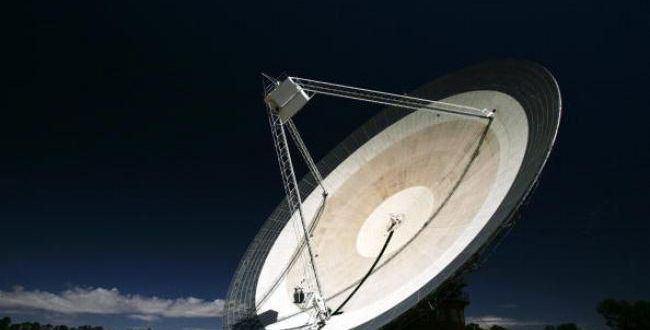A giant dish telescope in Australia has been aimed at the sun’s galactic next-door neighbour as part of a major new search for intelligent aliens.
The goal of the program is scanning the heavens including the closest million stars to the Earth’s sun as well as 100 closest galaxies to the Milky Way in a search for extraterrestrial intelligence.
The Parkes Dish has been around for awhile and was instrumental delivering the live video my parents enjoyed of the Apollo 11 moon landing back in 1969. It is named for the nearby New South Wales town of Parkes and is operated by Australia’s Commonwealth Scientific and Industrial Research Organization (CSIRO).
The 65-meter-wide dish will join the Green Bank Telescope in West Virginia and the Automated Planet Finder at Lick Observatory in Northern California in the Search for Extraterrestrial Intelligence (SETI) according to a statement made my Breakthrough Listen sponsor and wallet, Yuri Milner.
“The addition of Parkes is an important milestone,” said Milner on Monday. “These major instruments are the ears of planet Earth, and now they are listening for signs of other civilizations.”
“The Parkes Radio Telescope is a superb instrument, with a rich history,” said Pete Worden, Chairman of Breakthrough Prize Foundation and Executive Director of the Breakthrough Initiatives. “We’re very pleased to be collaborating with CSIRO to take Listen to the next level.”
Setting sights, ears on Proxima b
In August of this year, astronomers announced the existence of a planet similar to the size of Earth orbiting the “habitable zone” of Proxima Centauri located in “close” proximity to our sun at “just” 4.2 light-years away. The “habitable zone” is best described as somewhere that liquid water could exist given the distance from the sun and the recently discovered planet was named Proxima b.
“The chances of any particular planet hosting intelligent life-forms are probably minuscule,” said Andrew Siemion, director of the University of California, Berkeley’s SETI (Search for Extraterrestrial Intelligence) Research Center on Monday.
“But once we knew there was a planet right next door, we had to ask the question, and it was a fitting first observation for Parkes,” Siemion continued. “To find a civilization just 4.2 light-years away would change everything.”
While the Parkes dish is focused on Proxima b for the time being, it will ultimately shift its ears to a number of additional exo-Earths discovered in recent years by the Kepler Space Observatory and other instrumentation involved in SETI.
“Parkes is one of the most highly cited radio telescopes in the world, with a long list of achievements to its credit, including the discovery of the first ‘fast radio burst’. Parkes’ unique view of the southern sky, and cutting-edge instrumentation, means we have a great opportunity to contribute to the search for extra-terrestrial life,” said Douglas Bock, Director of CSIRO Astronomy and Space Science.
Agencies/Canadajournal

 Canada Journal – News of the World Articles and videos to bring you the biggest Canadian news stories from across the country every day
Canada Journal – News of the World Articles and videos to bring you the biggest Canadian news stories from across the country every day

